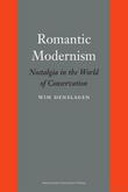Explore

Mag de monumentenzorg steun verlenen aan de reconstructie van de oude geveltjes wanneer daarachter vrijwel alles modern is? Moet de monumentenzorg alleen nog de voorgevel willen beschermen, als de rest van het monument is verdwenen? Volgens de gangbare opvattingen in de wereld van de monumentenzorg past op al dit soort vragen een negatief antwoord. Men vindt decorbouw oneerlijk, en iets herbouwen wat er niet meer is, noemt men een leugen tegen de geschiedenis. De vraag is waar deze hang naar oprechtheid vandaan komt. Misschien zien we hier de erfenis van het functionalisme dat bouwen van schijnarchitectuur verbood. Het functionalisme ontstond uit de Romantiek, toen architecten zich afkeerden van het academisch formalisme en een nieuwe rationele bouwkunst wilden uitvinden. Dit romantische streven naar oprechtheid werd in de monumentenzorg overgenomen. Wim Denslagen stelt dat de huidige monumentenzorg op bovengenoemde vragen ten onrechte een ontkennend antwoord geeft.
This book is included in DOAB.
Why read this book? Have your say.
You must be logged in to comment.
Rights Information
Are you the author or publisher of this work? If so, you can claim it as yours by registering as an Unglue.it rights holder.Downloads
- 407 - pdf (CC BY-NC) at OAPEN Library.
Keywords
- Architecture
- Art & design styles: Romanticism
- Building construction & materials
- Civil engineering, surveying & building
- Conservation and restoration
- Conservation of buildings & building materials
- Geschiedenis
- History
- History of Architecture
- History of art & design styles: c 1800 to c 1900
- History Of Art / Art & Design Styles
- History, geography, and auxiliary disciplines
- Humanities
- Modern Architecture
- Technology, engineering, agriculture
- The arts
- thema EDItEUR::6 Style qualifiers::6R Styles (R)::6RA Romanticism
- thema EDItEUR::A The Arts::AG The Arts: treatments and subjects::AGA History of art
- thema EDItEUR::A The Arts::AM Architecture::AMX History of architecture
- thema EDItEUR::N History and Archaeology::NH History
Links
DOI: 10.5117/9789089641038Editions

